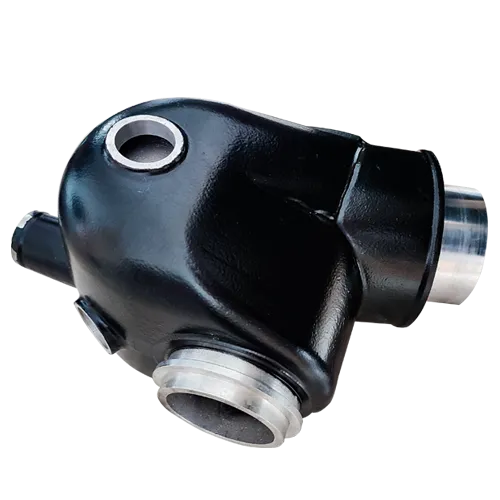Mobile:+86-311-808-126-83
Email:info@ydcastings.com
Impact of Casing Design on Centrifugal Pump Efficiency and Performance Optimization Strategies
Casing in Centrifugal Pumps An Overview
Centrifugal pumps are among the most widely used types of pumps in various industries, primarily due to their efficiency in moving fluids. At the heart of a centrifugal pump lies its casing, which plays a critical role in the overall performance and functionality of the pump. Understanding the significance of the casing in centrifugal pumps sheds light on how these machines operate and their efficiency in different applications.
The casing of a centrifugal pump is essentially the outer shell that encloses the pump’s internal components. It serves multiple purposes, starting with its primary function of directing the flow of liquid from the impeller to the discharge pipe. The design of the casing is carefully engineered to ensure that it minimizes turbulence, thus maintaining the smooth flow of fluid. This is crucial, as turbulence can lead to significant energy losses, making the pump less efficient.
Casing in Centrifugal Pumps An Overview
Another important aspect of the casing is its ability to withstand the internal pressure generated by the fluid being pumped. The casing must be robust enough to handle these pressures without deforming or failing. This requires careful consideration of the thickness and structural design, especially in high-pressure applications like oil and gas extraction or chemical processing.
casing in centrifugal pump

The casing also contributes to the hydraulic performance of a centrifugal pump. The design of the casing, including its shape and size, affects the velocity and direction of the fluid as it exits the pump. A well-designed casing ensures that the fluid is discharged at the optimal flow rate, preventing problems such as cavitation. Cavitation occurs when vapor bubbles form in the liquid due to low pressure, which can cause significant damage to the impeller and other internal components if not addressed.
Moreover, the casing must be designed for easy access to the internal components for maintenance and repairs. This consideration is crucial for minimizing downtime in industrial applications, as any disruption in pump operation can lead to significant productivity losses.
As technology advances, so do the design and manufacturing techniques for centrifugal pump casings. Computational fluid dynamics (CFD) simulations are increasingly used to optimize casing designs, allowing engineers to predict how modifications will affect pump performance before actual production. This leads to more efficient, reliable, and durable pump designs that meet the evolving needs of various industries.
In conclusion, the casing of a centrifugal pump is of paramount importance in determining its operational efficiency, durability, and overall effectiveness. By directing the flow of fluid, withstanding internal pressures, and allowing for ease of maintenance, the casing is an integral part of the centrifugal pump's design. As industries continue to demand more advanced pumping solutions, innovations in casing design will play a critical role in the future of fluid transport technology. Understanding the intricacies of pump casings not only helps in selecting the right pump for specific applications but also emphasizes the importance of engineering excellence in fluid dynamics.
-
Why Should You Invest in Superior Pump Castings for Your Equipment?NewsJun.09,2025
-
Unlock Performance Potential with Stainless Impellers and Aluminum End CapsNewsJun.09,2025
-
Revolutionize Your Machinery with Superior Cast Iron and Aluminum ComponentsNewsJun.09,2025
-
Revolutionize Fluid Dynamics with Premium Pump ComponentsNewsJun.09,2025
-
Optimizing Industrial Systems with Essential Valve ComponentsNewsJun.09,2025
-
Elevate Grid Efficiency with High-Precision Power CastingsNewsJun.09,2025











